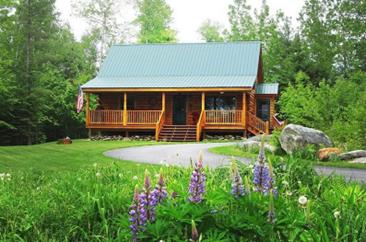
The rule in Illinois related to hunting near dwellings:
“(u) It is unlawful for any person to discharge any firearm for the purpose of taking any of the species protected by this Act, or hunt with gun or dog, or allow a dog to hunt, within 300 yards of an inhabited dwelling without first obtaining permission from the owner or tenant, except that while trapping, hunting with bow and arrow, hunting with dog and shotgun using shot shells only, or hunting with shotgun using shot shells only, or providing outfitting services under a waterfowl outfitter permit, or on licensed game breeding and hunting preserve areas, as defined in Section 3.27, on federally owned and managed lands and on Department owned, managed, leased, or controlled lands, a 100 yard restriction shall apply.”
The 300-yard restriction applies to:
1. Discharging any firearm for the purpose of taking any of the species protected by this act. This prohibition is directed at any discharge of a firearm for the purpose of taking a protected species, regardless of whether the shooter believes he or she is “hunting.” (Note: Wildlife Code defines hunting as: “the act of a person possessing a weapon or being accompanied by a dog or a bird of prey for the purpose of taking species protected by this Act in any location such species may inhabit.”);
2. Hunting with gun or dog;
3. Allowing a dog to hunt.
The 100-yard restriction applies to:
1. Trapping;
2. Hunting with bow and arrow;
3. Hunting with dog and shotgun using shot shells only;
4. Hunting with shotgun using shot shells only;
5. Providing outfitting services under a waterfowl outfitter permit, or on licensed game breeding and hunting preserve areas, as defined in Section 3.27, on federally owned and managed lands and on Department owned, managed, leased, or controlled lands.
One can avoid violating these restrictions if they first obtain permission from the owner or tenant. The statute requires that the permission be obtained before engaging in one of the regulated activities, not after the fact.
Who are the Owners and Tenants?
Take the time to conduct at least a brief investigation to identify the proper owners or tenants of any nearby dwelling. Permission has to be obtained from either the owner or tenant with respect to every dwelling within the area of restriction. Ownership is typically easier to identify than tenancy, as ownership should be ascertainable through the tract index in your local county recorder’s office. Be wary of mapping programs and tax records as they are not always immediately updated upon ownership changes, whereas tract indexes are almost always current.
Agreements, such as leases, that establish tenancy and create tenants, are not usually a matter of public record. You will have to rely on assertions from the owner or the person occupying the dwelling to establish who the tenant is.
Many parcels are now owned by entities (LLCs, corporations, etc.) rather than individuals. The Illinois Secretary of State’s website lists the registered agent of these entities if you need to get in contact with the owner(s) to obtain permission. The mailing address on the tax bill may also aid in contacting the individual(s) who can grant permission to hunt.
Permission
Permission should be obtained yearly, ideally in writing or in some easily verifiable manner, from the owner or the tenant of the dwelling (i.e. not the farm tenant who only leases the tillable acreage). The Illinois Department of Natural Resources provides this form for use in obtaining such permission from the landowner.
Permission should ideally be obtained from both the owner and tenant in situations where a tenant, as opposed to the owner, is occupying the dwelling in question.
Area of Restriction
The statute does not direct how to measure the distance from the dwelling. The distance restriction almost certainly applies to any measurable distance, “as a crow flies,” from the outer-most points of the dwelling structure itself. However, such distance might also by measured from outbuildings, fences, or other structures surrounding the dwelling.
Dwelling Undefined
What is an inhabited dwelling? In Illinois, the Wildlife Code does not define the term, but the criminal code defines the term dwelling in the context of residential burglary and home invasion:
““Dwelling” means a building or portion thereof, a tent, a vehicle, or other enclosed space which is used or intended for use as a human habitation, home or residence. “Dwelling” also means a house, apartment, mobile home, trailer, or other living quarters in which at the time of the alleged offense the owners or occupants actually reside or in their absence intend within a reasonable period of time to reside.”
Additionally, an Illinois court has previously ruled that a vacation home, or “camp,” consisting of five rooms with heat, air conditioning, and telephone service throughout year, constitutes a “dwelling.”
The criminal code does not use the term “inhabited dwelling” (as the Wildlife Code does), merely “dwelling,” so it remains subject to interpretation and therefore anyone hunting near a structure should error on the side of caution.

